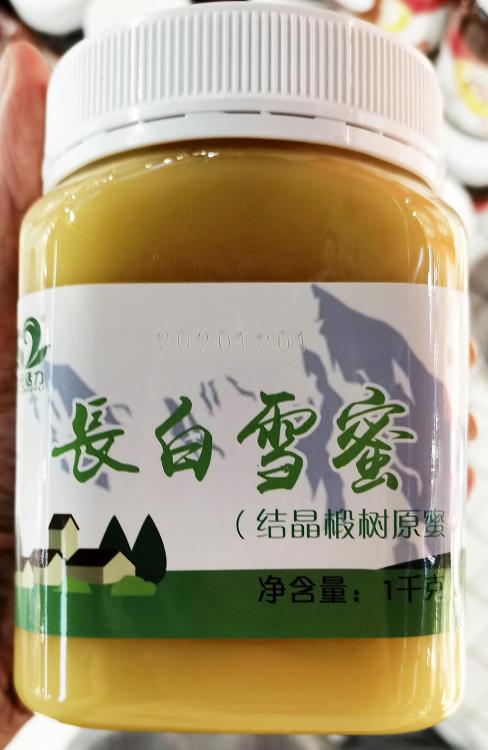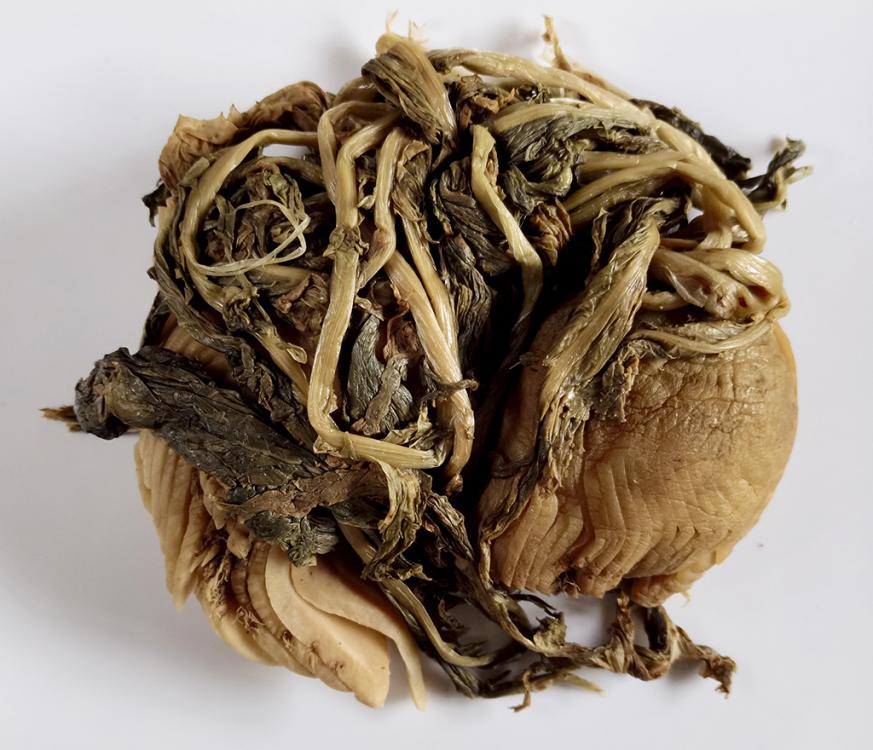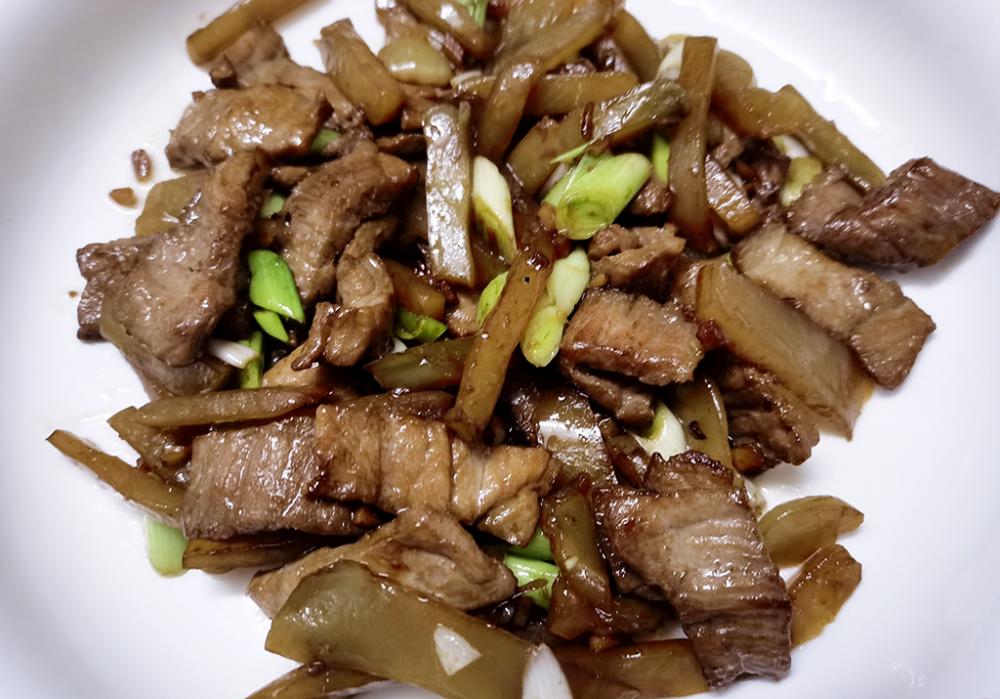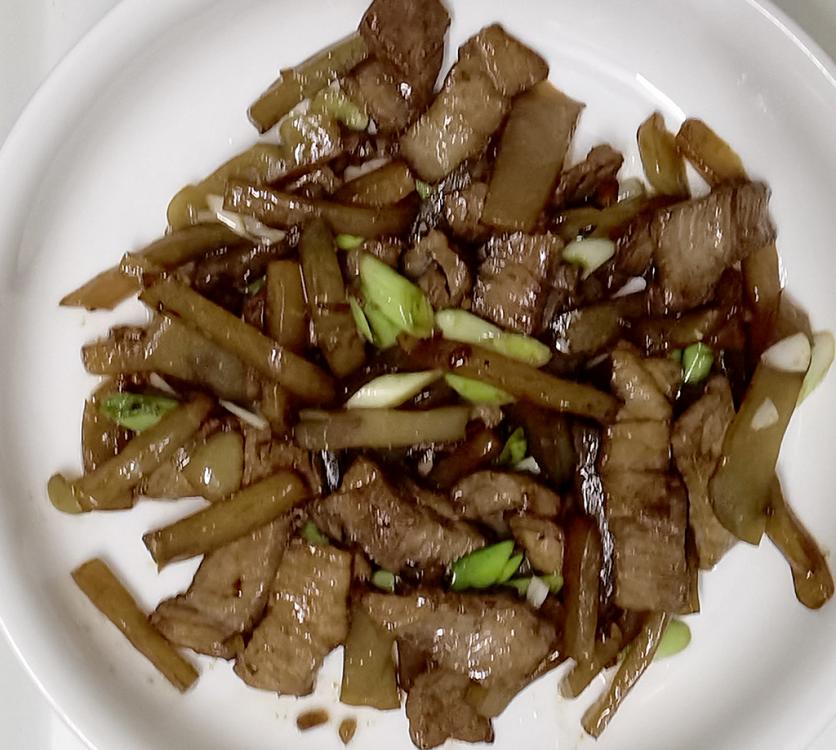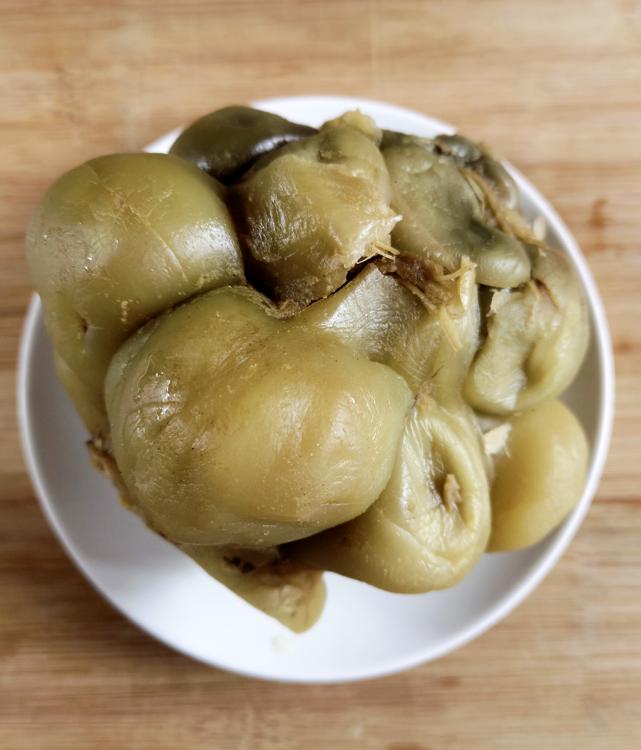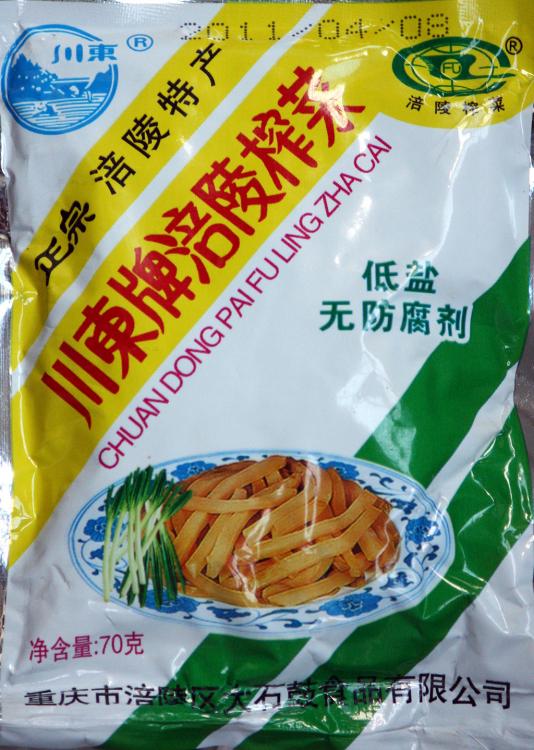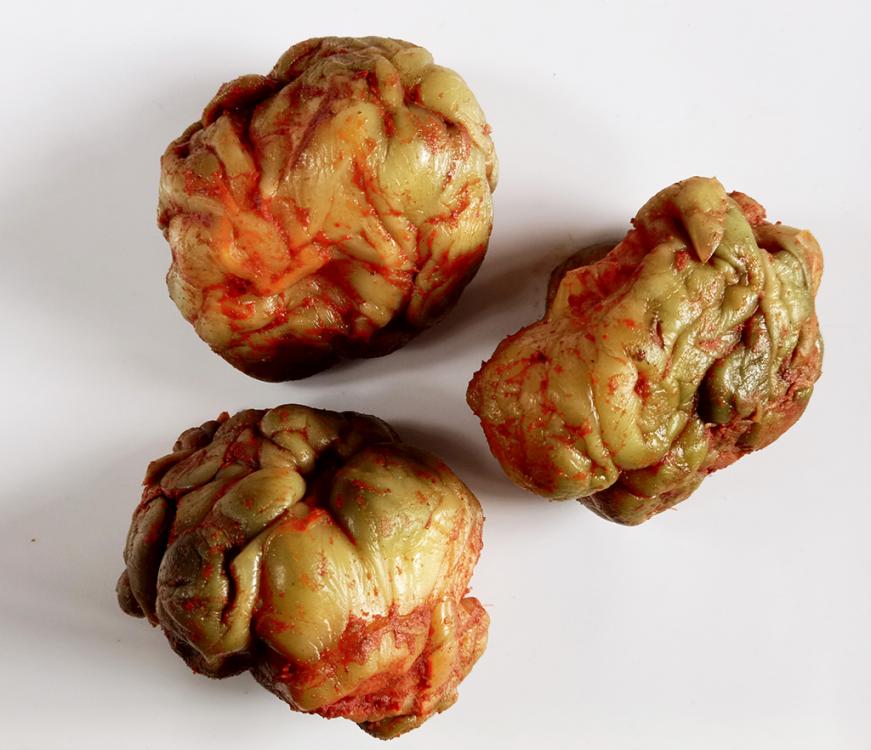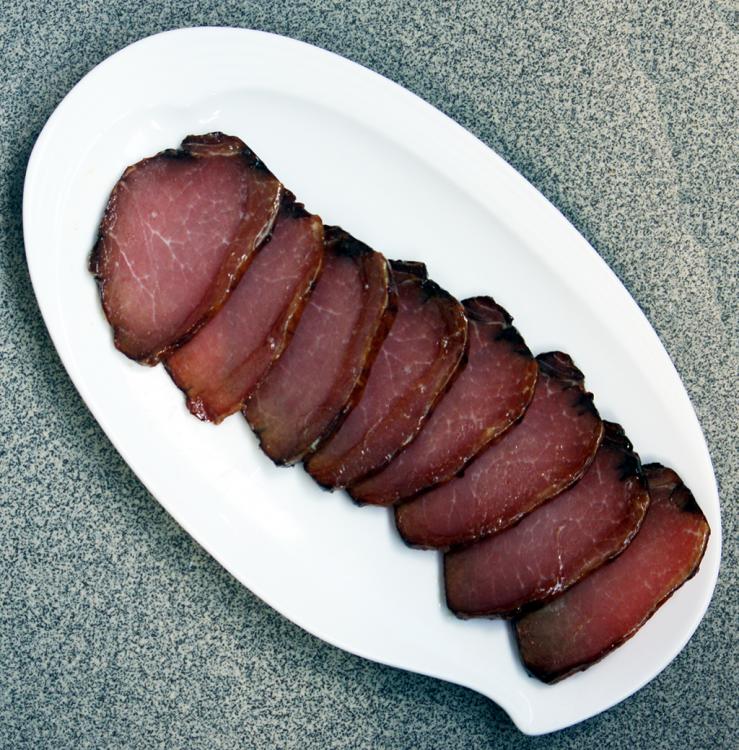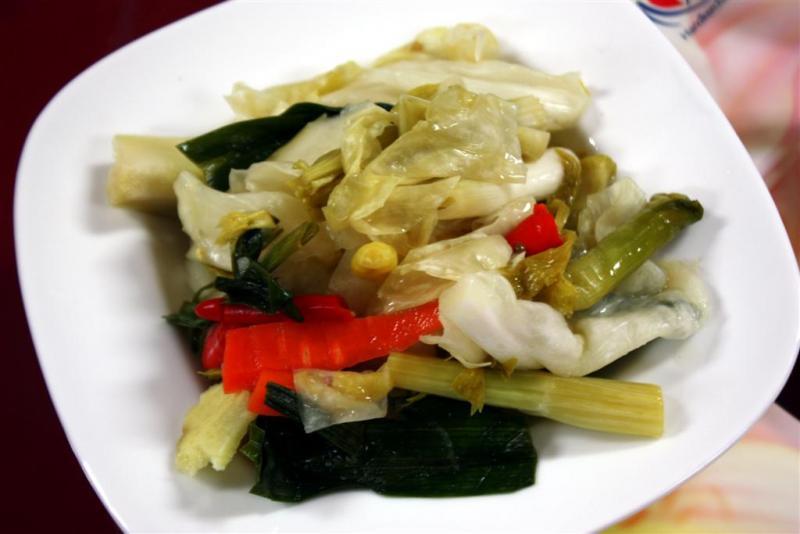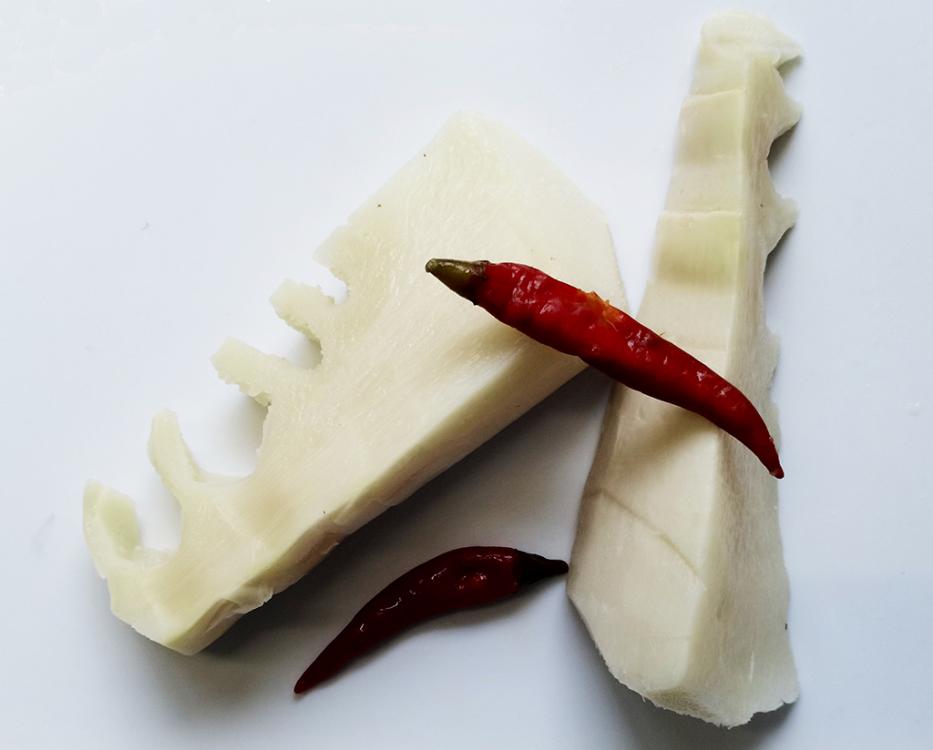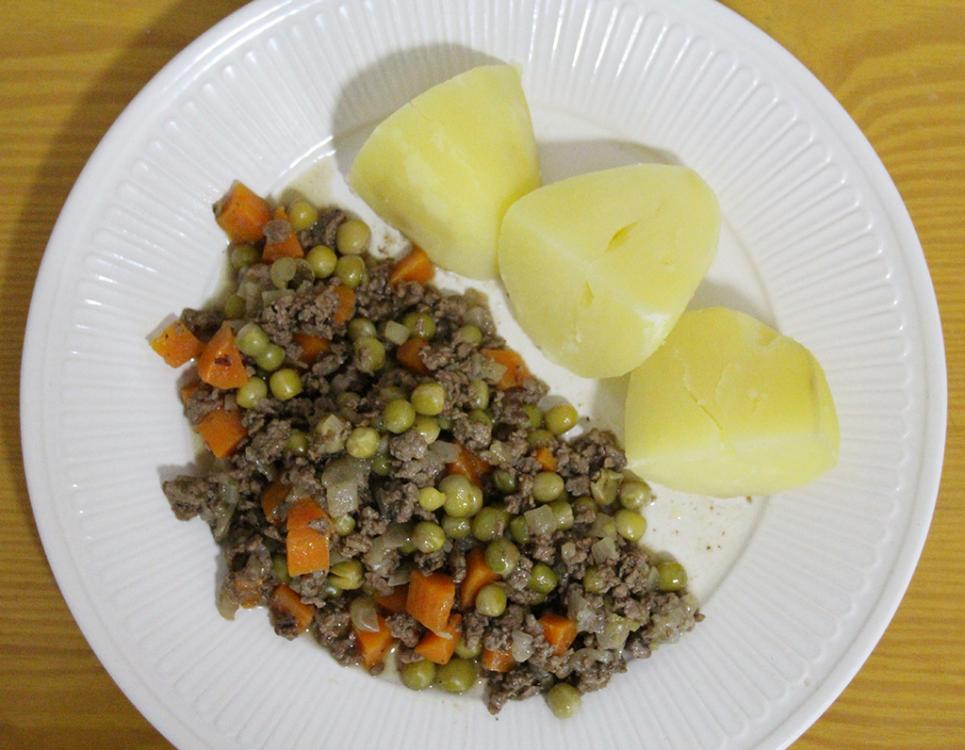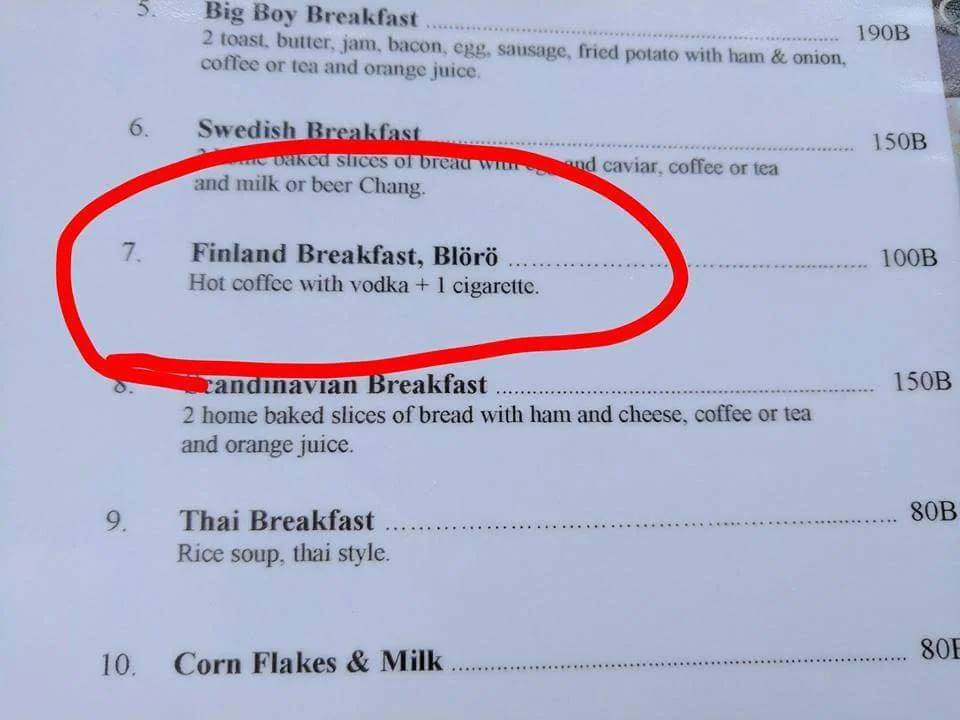-
Posts
16,745 -
Joined
-
Last visited
Content Type
Profiles
Forums
Store
Help Articles
Everything posted by liuzhou
-
Me too. I haven't tried this one yet. I seem to have acquired a more than adequately large collection of honeys in the last few weeks. This one is, as others have suggested, 'creamed'. Here is my translation of the the more interesting information on the rear label of the jar.
-
Chinese Tilia Honey Here is the entire relevant Wikipedia entry This batch is indeed from said mountain.
-
8. 大头菜 / 淡口采 - Salt Cured Turnip Here's another Sichuan beauty for you. Sadly, you are unlikely to run into it outside China. It comes in China with various names. Fuchsia Dunlop calls it 大头菜 (dà tóu cài, literally 'big head vegetable') , a name I've seen elsewhere, whereas my local supplier calls it 淡口菜 (dàn kǒu cài, literally 'mild mouth vegetable). Whatever, it is a type of turnip Brassica juncia var. napitormis, native to China. This is another salt-cured item and arrives shrink wrapped in a pair, curled into a ball. Teasing the ball apart reveals the two plants, looking like some monsters from the deep. It is, as the local name suggests, relatively mildly cured compared to the zha cai in the previous numbered post, but is used in the same ways.
-
I just did a quick check on Taobao, China's largest on-line shopping portal. I searched for "Chinese pickled vegetables". It returned 40,339 pages with 40 items per page = 1,613, 560 items! Of course, that doesn't mean that number of different items. But I think it does show that this topic could run forever! And that's just the vegetables.
-
Having bought a head of Zha Cai to decorate my post in the link, it seemed opportune to cook some of it. To tell you the truth, I've been a bit off my grub since I had my first Covid vaccine a few days ago. I don't know if that is just coincidence or not. I don't feel in the least unwell; just not hungry. It could be the weather. Anyway, I just made a simple dish of pork and zhacai with garlic and scallions. The salty spicy flavours of the zha cai seemed to perk up my taste buds. I also added a little soy sauce and even less oyster sauce. The sweetness of the oyster sauce counter-balanced the salty pickle nicely. Served with rice. Not the prettiest dish ever; but tasty. Followed up with three jam doughnuts. As all good Sichuan people do!
-
7. 榨菜 (zhà cài) - hot pickled mustard tuber Sichuan is known for its pickle, but one in particular stands out. Again it's a type of mustard, this time Brassica juncea subsp. tsatsai. Only the bulbous tuber is used in what is termed 榨菜 (zhà cài), literally 'pressed vegetable'. Zha Cai The tubers are salted then pressed with a heavy weight placed on top. After some time (it varies) they are dried, then put into earthern jars with ground chillies and/or chili paste, Sichuan peppercorns and other spices and left to ferment. When deemed suffiently fermented, the chilli paste etc is washed off and they are ready to be eaten. Washed zha cai The fermented tubers can be chopped finely and used in several ways. In Sichuan, chopped zha cai is often added to congee for breakfast. Alternatively it can be sliced and added to stir-fries. Zha cai from Fuling district (涪陵区 - fú líng qū) in Chongqing (formerly part of Sichuan), is said by many to be the best. It is also where the pickle is believed to have been invented. Wujiang (乌江 - wū jiāng) is the largest brand and is located in Fuling. I'm told it is often sold canned in Chinese markets in the USA and Britain, unhelpfully labelled in English as 'Chinese preserved vegetable'. That could cover literally hudreds of things. Here I can buy it by the bulb, as above, as well as cut into batons or finely chopped. It is also sold in jars or bags.
-

Help please! Looking for a Chinese pickle jar in northern New Jersey
liuzhou replied to a topic in Kitchen Consumer
-
Yes. And fish. I'll get to that eventually.
-
Cured but not smoked.
-
Most bacon in the world is more like that than like American bacon.
-
Talking of the soy pickled garlic remind me of this. Another type of preserved food. Soy sauce cured bacon.
-
Same here. Pickles may not feature on the menu, but are served as described. They also appear in many dishes, but may not be listed on the menu. Many Sichuan dishes, for example, contain pickled chillies.
-

Help please! Looking for a Chinese pickle jar in northern New Jersey
liuzhou replied to a topic in Kitchen Consumer
I'm in the wrong business! They are about $3 here! -

Help please! Looking for a Chinese pickle jar in northern New Jersey
liuzhou replied to a topic in Kitchen Consumer
I'd be interested to know how much one of these costs in the USA, if anyone can enlighten me. Thanks. -
Well, they certainly are here in China. Most larger retaurants catering for weddings, banquets etc make their own paocai. What happens elsewhere, I don't know. This plate of pickles was served at just such a restaurant here 10 years ago, as documented in this post. One of my regular haunts only has five tables and also makes all its own pickles. My neighbours make their own pickles.
-
Well, line caught is a heck of a lot better than most industrial fishing methods. When frozen properly, yes. But it so often isn't and you have no way of knowing until you buy it and get it home. As I said, I'm very lucky to have access tofresh seafood. I never forget.
-
I haven't bought frozen fish for many years. Most of it is water and I don't like paying for stuff that falls out of the sky for free. If you haven't already, try weighing your frozen fish before thawing and after. Intresting. I buy all my fish fresh. How do I know it's fresh? Simple. It's still alive 90% of the time. I very rarely buy or have bought other seafood other than alive. Frozen prawns or shrimp? No thanks. I do realise people far from coastal areas have less choice and I am lucky, yet there is also an unwillingness among suppliers to challenge that. With modern infrasructure, it is perfectly possible to supply supemarkets etc with fresh fish - but it is costly, for the supplier and ultimately for you. You get what you pay for.
-
Yes, There are many varieties, not all edible. Most are poisonous unless prepared correctly. Arsenic. I know which are edible because the supermarkets and markets tend only to sell those. Poisoning customers isn't usually good for business! 🤣
-
6. 老坛笋 (lǎo tán sǔn) If, like me before I came to China, you have only had bamboo shoots from a can, then you've never had bamboo shoots in all their glory. There are many was to prepare them (some of which I'll get to later; some of which aren't relevant in this topic). But I'll start with one of the simplest. But not the simplest which is coming soon. 老坛笋 (lǎo tán sǔn) means 'old earthern jar bamboo shoots' which I think is pretty self explanatory. The bamboo shoots are pickled in old earthern jars with rice vinegar and chilis. We like our chili hit round here. They are usually sliced thinly into batons and either used in the paocai I described above or added to stir fries. Again the vinegar is considered to cut through fattiness of meats, but Chinese rice vinegar is milder than most, so the delicate, subtle flavour of the bamboo still comes through. This is one I buy a lot, but have never made. a) I don't have an old jar b) it isn't really practical to make for just one person living alone (but not lonely).
-
-
-
The two versions of suancai are ready to eat. They are not usually rinsed or soaked. Both are simply chopped finely and served as I described.



